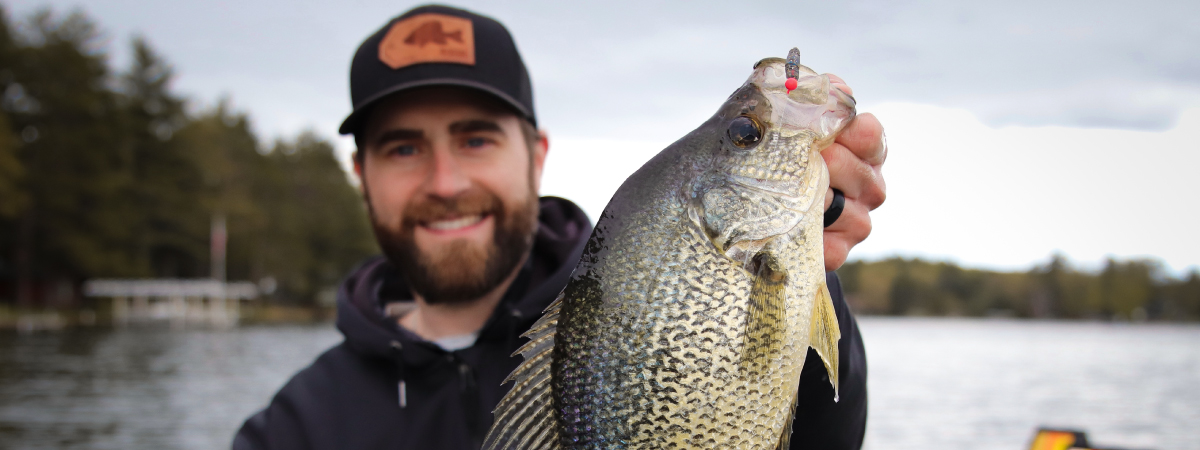Staying Organized On
and Off the Water
Organization is important no matter your craft. When it comes to fishing, however, a concerted effort for organization should hold a higher precedence. The number of rod, reel, line, and tackle configurations an angler might handle are truly endless. This is particularly evident with fishermen that target more than one species.
Take a look in almost any professional angler’s truck, boat, or garage. You’re likely to see a series of well-organized and categorized rod, reel, line, and lure selections. Many professional anglers rely on their organizational and inventorial skills to keep them successful on the water. They know what specific rods and reels they have, what lures they have, and whether they need to restock something in the near future.
It’s not always an easy task but implementing some basic organization skills can pay huge dividends throughout your fishing season.
Tackle
Organize and classify your tackle based on lure types. Employ individual boxes or trays for each type of lure – i.e. have a box for jigs, a box for jerkbaits, a box for topwater, etc. In certain instances, it’s helpful to sort by sizes and shapes to keep things as dummy-proof as possible.
Take crankbaits, for example, which come in many shapes, styles, and sizes. It’s a good idea to separate these based on their sizes, running depths, and the specific applications they’re used for. An individual may have certain crankbaits that are used for trolling, along with others that are used for casting. Keeping these categorized appropriately will prevent you from grabbing the wrong box before you hit the water.
It’s also advantageous to sort lures based on species. While there are lures that are certainly multi-species in nature, the majority of lures are developed to target a specific species. By organizing lures by species, you can ensure you have the specific lures you need for the species you intend to target that day. If you’re intentions are to go musky fishing, you don’t need to drag along a box full of 1/32 oz jigs and small plastics you use for panfish.
In today’s market, the organizational tools are plentiful. Fishing companies have developed a wide range of boxes, trays, and bags to help anglers stay as organized as possible. There are options for every angler, every application, and in many instances for specific lures. Case in point – Fishmore Company.
This company has built it’s brand around creating boxes for specific lures. Their boxes feature built in foam inserts that will fit specific lure types. For example, they have boxes for Megabass Vision 110s, boxes for Rapala Jigging Raps, and boxes for Berkley Flicker Shads. In certain instances, more generic box types are necessary.
That’s where companies like Eurotackle come into play. The company has five different box offerings which can be used for a wide variety of lures. These options include open compartments, slotted foam, as well as combinations of both.
Regardless of how you categorize your tackle selection, the labeling of individual trays or boxes is worth every ounce of effort. This prevents you from sorting through every single to find the specific one you’re looking for. Labeling the outside edge allows for quick access whether it’s on a shelf or in a tackle bag.
A simple piece of tape will suffice for labeling, but if you want to take your organization to another level, label makers are relatively inexpensive and will ensure you can always read the label.
Knowing what tackle you have and what tackle you don’t can sometimes make the difference between catching fish or not. We’ve all experienced those days where the fish seem to only want one specific color or size combination. By keeping tabs on your inventory, you can ensure you don’t run out of something when you need it most.
Rods, Reels, and Line
Keeping your rod, reel, and line selections organized is also key to success on and off the water. Similar to tackle organization, it’s beneficial to store and categorize rods based on species type and application. An active inventory of your rods, reels, and line is also beneficial.
Take a bass fisherman, for example. Many bass anglers employ a wide range of rod, reel, and line types in their pursuit of fishy adversaries. They need to know which reels they have paired with which rods, as well as the line types and weights on a given set up.
By maintaining an active list of their equipment, they can quickly discern which setup they have for a given situation. It also helps to make decisions when they go to purchase a new rod and reel combo. They can easily determine the areas they are covered in, as well as those where they’re lacking.
Labeling reels with line weights will help an angler to verify their setup with a quick glance. It is also advantageous when spooling reels because you’re not left guessing about what type of line you had on the reel previously.
Beyond what an angler does, there are also tools specifically designed to keep rods organized both on and offer the water. A simple rod rack – whether free standing or permanently mounted – allows an angler to visualize their rod collection and verify they have the rods they need before they hit the water. Other tools, like rod and lure sleeves, are great at preventing tangles or the dreaded broken rod tip.
A final piece of advice: only bring what you need. The more gear you have with you, the more challenging it is to stay organized. If you’re not going to fish with it then leave it at home.
Staying organized can be beneficial in all aspects of life – but keeping your fishing equipment organized can ultimately lead to more success on the water. Take the time to comb through your stuff, categorize it, and maybe even purchase a fancy little label maker.








